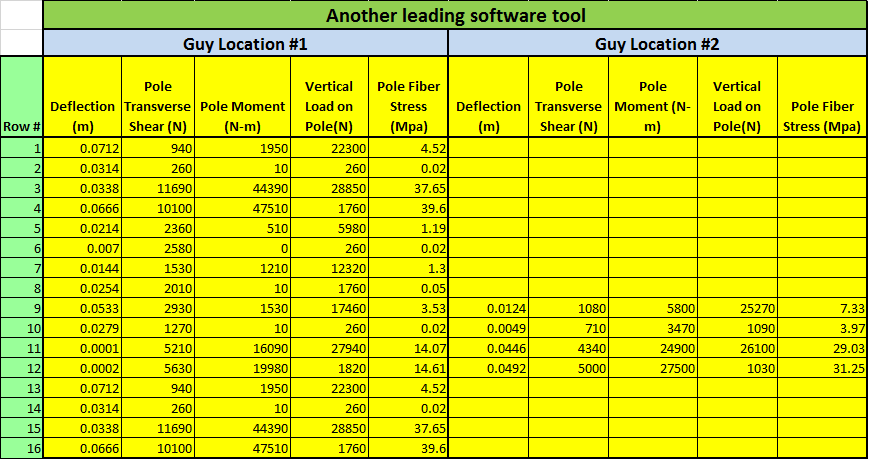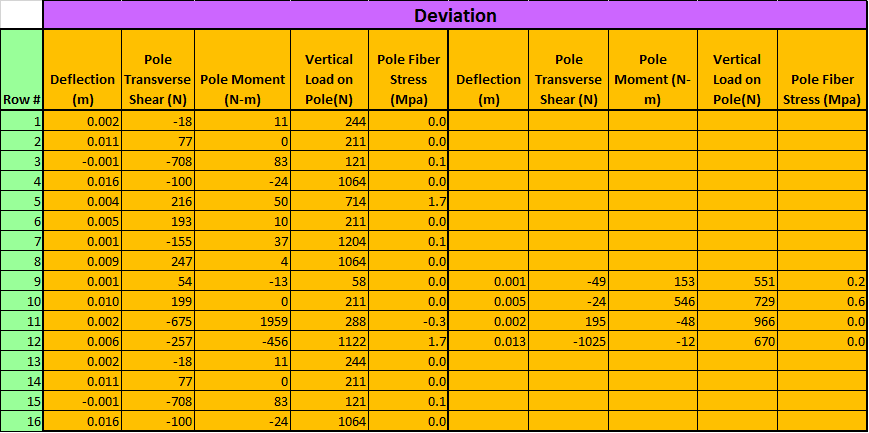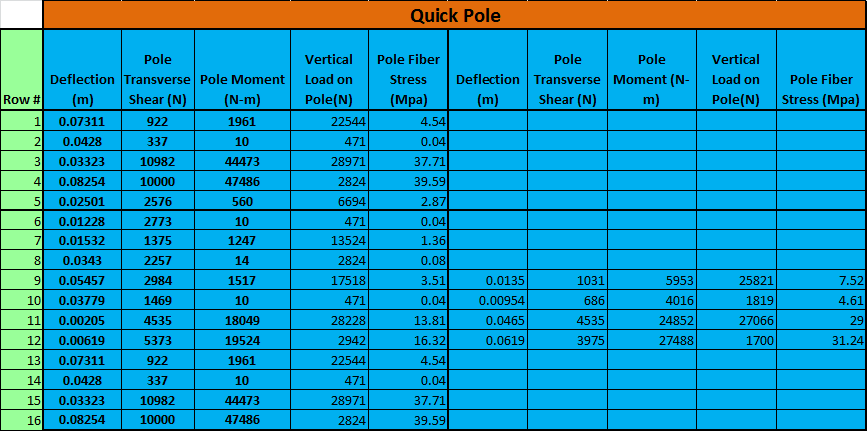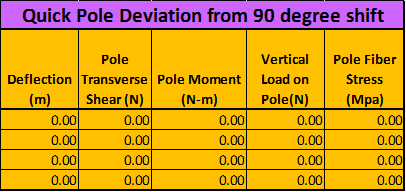Quick Pole Verification
Guyed Structure Response / Model Tests
The focus of this category of tests is to confirm that the basic pole model with the addition of guying elements behaves as expected. It is important to validate that the pole and the guys share the loads in ways that are consistent with an established baseline. The model should not produce different results when loads and guys are placed at different angles. The use of strong and weak poles with guys attached close and far away from the loads, plus multiple guy scenarios, is the focus of these tests. To simulate stronger poles, tests are performed at lower levels of the pole where the pole is thicker.
The following tests are suggested:
- Use a 40 ft class 4 pole. Species to be Red Pine. Use NESC derived pole dimensions and Modulus of Elasticity.
- Apply a 10000N load at 2 feet from the top of the pole (9.75m).
- Place a 3/8" Grade 160 (or HS grade) guy wire at the load point to an anchor with a lead of 4 meters
- Measure deflection, forces, moments and fiber stresses at the guy location.
- Repeat the above test similating an overhead span guy of 40 meters with no effective vertical elevation changes.
- Repeat the above tests with the guy attachment lowered to 5 meters
- Repeat the above test with the load and guy attachment points reversed.
- Repeat the above test with the load and guy attachment points both at 5 meters high.
- Repeat all above tests with an additional same guy attachment at 7.0 meters high.
- Repeat steps 1 to 6 with the load and guying rotated by 90 degrees to prove that the models are directionally insensitive.
- No wind or storm loads
- This is a Linear Analysis with loads applied without additional load factors applied. If non-factored loads are not possible when comparing another tool, divide the proposed load by the load factor before it is applied to the pole.
Guyed Model Tests

When compared to another software tool, Quick Pole compares as follows:

These are the results of our tests against Quick Pole. You can also use these Quick Pole Project Files to duplicate these results for yourself. For exact results, please ensure that the Line Grade is set to "No Overload Factors" so that the applied and static loads are not amplified.

As a further test to validate that Quick Pole's model gives the same results with loads placed at different angles, the first and last four tests are compared directly:



